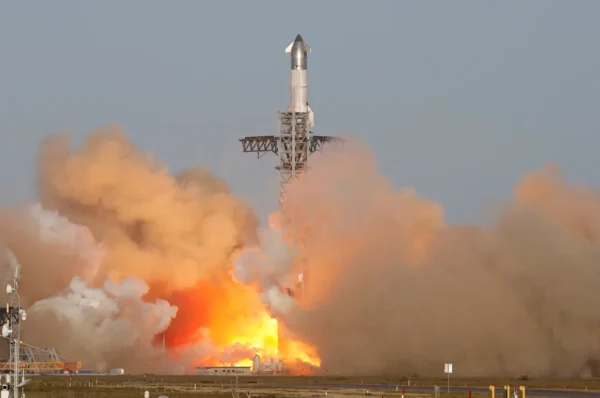VIP LIVEALERTS-PRO

SpaceX Starship Flight 9
SpaceX Starship Flight 9: Progress and Setbacks in Latest Test Launch
On May 27, 2025, SpaceX launched its ninth test flight of the Starship launch system from Starbase, Texas. This mission marked the first reuse of a Super Heavy booster, a significant step toward the company’s goal of developing a fully reusable spacecraft for missions to the Moon, Mars, and beyond.
Mission Highlights and Objectives
The test flight featured Ship 35 atop Super Heavy Booster 14-2. The primary objectives included demonstrating the reusability of the Super Heavy booster, deploying eight Starlink mass simulators, and testing the spacecraft’s reentry capabilities.
Launch and Ascent
The launch occurred at 6:36 PM CDT, with all 33 Raptor engines on the Super Heavy booster igniting successfully. Stage separation proceeded as planned, and the upper stage’s six Raptor engines performed nominally, allowing the spacecraft to reach space.
In-Flight Anomalies
Despite a successful ascent, the mission encountered several issues:
Payload Deployment Failure:
The payload bay doors failed to open, preventing the release of the Starlink mass simulators.
Booster Landing Attempt:
The Super Heavy booster was programmed for a splashdown in the Gulf of Mexico. However, it was lost during the landing burn, resulting in its destruction.
Upper Stage Reentry Failure:
Approximately 20 minutes into the flight, the upper stage experienced a propellant leak, leading to a loss of attitude control. The spacecraft began spinning uncontrollably and ultimately disintegrated during reentry over the Indian Ocean.
Context and Future Plans
This flight was the third consecutive test in 2025 to end in failure, following similar outcomes in January and March. Despite these setbacks, SpaceX views each test as an opportunity to gather valuable data and refine the Starship system. CEO Elon Musk has indicated plans to increase the frequency of test flights, aiming for launches every three to four weeks.
The Federal Aviation Administration (FAA) is collaborating with SpaceX to investigate the anomalies encountered during Flight 9. No injuries or damage to public property have been reported.
Conclusion
While Flight 9 did not achieve all its objectives, it represented progress in SpaceX’s iterative development approach. The successful reuse of a Super Heavy booster and the data collected from this mission contribute to the ongoing efforts to create a fully reusable launch system capable of supporting future space exploration endeavors.
Unlock the power of AI-driven trading with VipLiveAlerts-Pro and stay ahead of the market with real-time alerts and expert insights—join today and transform your trading strategy!
Disclaimer: This content provides informational insights. Always conduct independent research before making investment decisions. Past performance is not indicative of future results.
